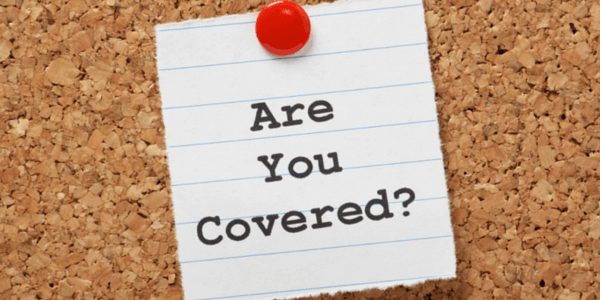If you’re a buy and hold real estate investor, finding the right home insurance policy plays an important part in protecting your long term asset. Between the endless paperwork and lengthy searches comparing various policies, finding the right coverage for your requirements can become overwhelming. Here are five tips which can help you know with certainty that you’ve found the ideal home insurance policy to protect your long term asset.

5 Tips for Choosing the right Policy
Know your options.
The most important step in the research for home insurance is researching the options. You won’t know with certainty that you’re getting the best coverage and cost unless you do a comparison of policies and price quotes from multiple companies. Prices vary widely between carriers due to each company employing a different algorithm to calculate their customers’ premiums. So, by comparison shopping, you could save yourself a lot of money each year with your home insurance.
You can save time by using an insurance aggregating website such as HomeInsurance.com to view multiple quotes simultaneously. You can check the common insurance premiums by state too. However, by taking the time to speak with company representatives individually, you’ll be more likely to receive an accurate quote, based upon your credit score, location, type of home, and coverage needs.
Sometimes it’s useful to look at surveys of the best insurance carriers, that are conducted by asking real consumers about their policies and experiences. Consumer Affairs, as an example, recently published a list of the Top Ten Best Rated Homeowners Insurance Companies for 2016.
The smaller company together with the better price could seem more appealing, but it might not be worth it in the long run. Remember, “Large national carriers are likelier to invest in emergency response equipment and technology, that gives them an advantage,” according to Lynne McChristian, a Florida Representative for the Insurance Information Institute. While you may pay a little bit higher of a premium, if you choose a bigger carrier, you’re more likely to be given a swift response in a disaster.
Buy the bundle.
When searching for homeowner’s insurance, ask the carrier if they’re in a position to bundle your home and auto coverage. Although reduced prices for bundling will vary by carrier, opening a multi-line insurance policy by bundling your property and auto coverage can help you save anywhere from “3 percent to 22 percent,” reported by Amy Danise, editorial director of Insure.com in an interview for Equifax.
Talk to an expert.
You may have better luck finding the optimum policy by actually talking to an independent insurance agent who works with many different carriers. Since they aren’t beholden to any one company, you’ll know they’ll be finding you the best coverage for your particular needs.
Streamline their interview process by having the answers to the following questions ready:
What type of property will you be insuring (new townhome, new single-family home)?
How many residents are typically in the home?
What is the square footage/how many stories does the home have?
What type of siding and roof does the property have?
What is the number of fireplaces?
Does your home have a monitored alarm system?
What is the approximate value of the personal property you want to protect in case of loss?
Interview the carrier.
Whether you’re talking to an independent agent or even an associate of a particular carrier, remember to ask for the answers to the following list of questions. Not being aware of the answers could prove to be a costly mistake later on.
What is included in the policy? Will there be coverage for just the new home dwelling or for the actual housing structure, as well as for personal property and people as well?
What are the limits for coverage on personal property?
What is the liability coverage?
What is the loss of use coverage?
What coverage do you offer for flooding and weather-related issues?
Understand the coverage.
Understand your coverage before you sign. People tend to think of their property insurance policies as one big safety net and catch all that will protect them in any sort of disaster or emergency. The unfortunate truth is that many kinds of natural disasters aren’t covered under standard policies.
If you live in a state prone to hurricanes, you will have to inquire about buying wind protection coverage. In states prone to sinkholes, earthquakes or mudslides, you would need to purchase additional “earth movement coverage.” Flood damage is likewise not insured by standard homeowners insurance. Speak to an agent about any of these additional coverages you might need before finalizing your policy.
Finding the Right Policy
While interviewing companies and pouring over the fine print of policies might appear to be a hassle now, you’ll be able to relax after you’ve chosen your coverage, knowing that you’ll have the help you need to get back what you lost in the event of a disaster. Selecting the home right insurance coverage for your investment property will provide you with peace of mind, understanding that your asset is protected.